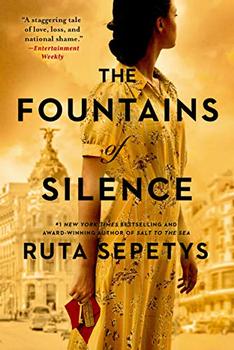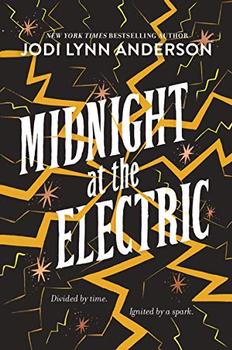Summary | Excerpt | Reading Guide | Reviews | Beyond the book | Read-Alikes | Genres & Themes | Author Bio

One of my very favorite historical novels is Tamar by the deceased author Mal Peet. After I finished The Emperor of Any Place, I was pleased—but not entirely surprised—that its author, Tim Wynne-Jones, credits Tamar as a major influence. Both books are memorable for their profound engagement with the devastating complexities, paradoxes, and staggering personal tolls of war—and equally, for the fact that these brilliant insights arise out of works of literature aimed not at adults, but at young people.
The central modern-day character in Emperor is seventeen-year-old Evan, who has been shattered by the sudden death of his beloved father. Evan's mother left the family when he was still a toddler. At the urging of other adults, Evan reaches out to his only other known relative: his grandfather, Griff, a career military man whom Evan has never met. Evan doesn't fully understand the rift that had existed between his dad and grandfather since it happened long before he was born; all he knows is that it stemmed from his dad's decision to avoid the draft during the Vietnam war by fleeing to Canada.
When Griff arrives in Evan's Toronto suburb (nicknamed "Any Place" by Evan and his dad), Evan has to wonder whether his grandfather has a hidden agenda. After all, his dad had died just days after receiving a mysterious manuscript from a stranger in California—whose origins somehow seem to be connected to Griff.
The manuscript is an English translation of a series of journals written in Japanese during the waning months of World War II, by a serviceman, Isamu Oshiro. Oshiro is trapped on a tiny unknown island he nicknames Kokoro-Jima or the "heart-shaped island." His account of his time there, written as a long letter to his beloved wife back home, relates stories of monsters and ghosts, and of an unexpected friendship between Oshiro and the one other human denizen of the island, an American serviceman, Derwood Kraft, who's survived a plane crash.
Kraft and Oshiro come not only to communicate with each other but they also rely on and trust one another. Their relationship utterly illustrates not only the peculiar bonds that can arise during wartime but also their limitations in the face of global forces far stronger than any individual or pair of people. This war story, which is included in full, alternates with glimpses of Evan and Griff's similarly uneasy, even rocky, nascent relationship—the parallels between the two narratives are subtle but effective, and will not be lost on careful readers.
The contemporary story of Evan and his grandfather is realistic and convincing as a modern-day story of a young man coming of age during a time of grief. The historical narrative includes supernatural scenes and creatures whose presence adds suspense—even terror—and vividly deepens and enriches the novel's themes about the vital need for storytelling, the strength of memories, the strong pull of family connections, and the catastrophic personal and social costs of war. Pretty intense stuff—one reason why The Emperor of Any Place is worthwhile reading for all ages, young adult and up.
![]() This review was originally published in The BookBrowse Review in November 2015, and has been updated for the
March 2017 edition.
Click here to go to this issue.
This review was originally published in The BookBrowse Review in November 2015, and has been updated for the
March 2017 edition.
Click here to go to this issue.

If you liked The Emperor of Any Place, try these:

by Ruta Sepetys
Published 2020
From the #1 New York Times bestselling author of Salt to the Sea and Between Shades of Gray comes a gripping, unforgettable portrait of love, silence, and secrets amidst a Spanish dictatorship.

by Jodi Lynn Anderson
Published 2019
New York Times bestselling author Jodi Lynn Anderson's epic tale - told through three unforgettable points of view - is a masterful exploration of how love, determination, and hope can change a person's fate.
I always find it more difficult to say the things I mean than the things I don't.
Click Here to find out who said this, as well as discovering other famous literary quotes!
Your guide toexceptional books
BookBrowse seeks out and recommends the best in contemporary fiction and nonfiction—books that not only engage and entertain but also deepen our understanding of ourselves and the world around us.